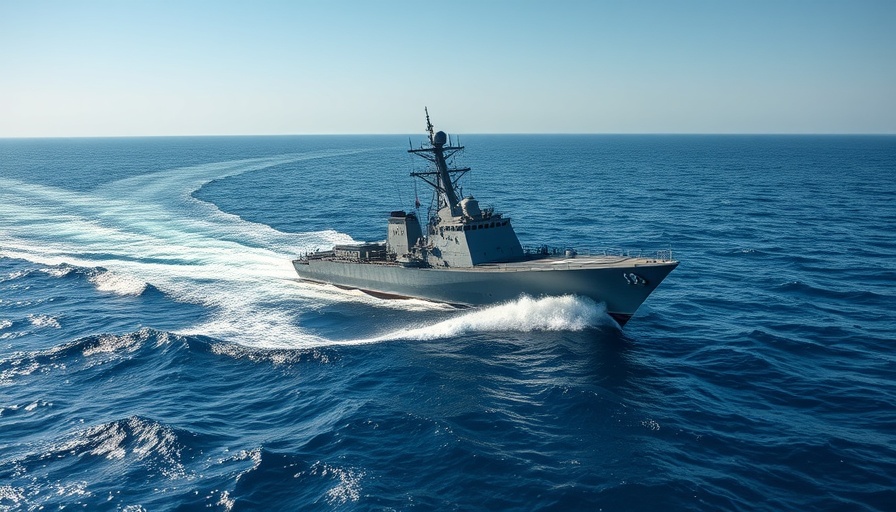
The Transition to Advanced Naval Technology in the Hellenic Navy
The sea trials of the HS Kimon, the first Defence and Intervention (FDI) frigate built for the Hellenic Navy, mark a significant milestone not just for Greece but for the evolution of naval capabilities worldwide. Scheduled for delivery later this year, the HS Kimon is poised to enhance the operational readiness of the Hellenic Navy, particularly amid escalating naval tensions in the Eastern Mediterranean.
Understanding the Capabilities of HS Kimon
With a tactical displacement of 4,500 tonnes, the HS Kimon stretches approximately 122 meters long and 18 meters wide, achieving impressive speeds of up to 27 knots. Designed with advanced warfare capabilities, this frigate includes several features that are indicative of a new era in naval technology. Facilities for a ten-tonne helicopter and vertical take-off and landing UAVs underline its versatility, enhancing both aerial and maritime warfare capacities.
The vessel incorporates a comprehensive package of weaponry. Among its offensive might are 32 MBDA-developed Aster anti-air missiles, eight Exocet MM40 B3c anti-surface missiles, and advanced sonar systems developed by Thales that ensure superior situational awareness. This multi-mission component enables the frigate to tackle a range of conventional and asymmetric threats.
Phased Testing: Ensuring Operational Effectiveness
The current phase of sea trials focuses on testing the HS Kimon’s vital systems—such as propulsion and navigation. This critical phase will pave the way for a subsequent focus on combat systems and the ship’s endurance at sea. The rigorous testing protocols reflect a commitment to not only deliver a vessel but to ensure it operates efficiently and safely under various combat scenarios.
Future Implications for Naval Warfare
The introduction of the FDI frigates signals a larger trend in naval warfare capabilities across Europe and beyond. By 2026, the Hellenic Navy plans to commission three FDI frigates, expanding its ability to conduct operations in the challenging Eastern Mediterranean Waters.
This model with advanced cybersecurity measures, including dual data centres, demonstrates a shift towards integrating technology not only for offensive operations but also for safeguarding electronic warfare domains. The importance of cybersecurity in modern fleet design cannot be overstated; as navies around the world adapt to new technological threats, this frigate sets a precedent.
Regional Naval Dynamics
The HS Kimon's anticipated deployment brings into focus the strategic game of naval capabilities among Eastern Mediterranean nations. The geopolitical landscape is evolving as various states enhance their maritime strength, particularly in light of recent tensions. This era of competition underscores the necessity for robust, multi-mission vessels capable of responding to varied operational demands.
Concluding Thoughts on Naval Progress
As the HS Kimon prepares to join the fleet, it becomes a symbol of technological advancement and strategic readiness for the Hellenic Navy. Its capacity to adapt and counter emerging threats fortifies Greece’s role in regional security dynamics.
The story of HS Kimon is not just about one ship; it encapsulates the military’s ongoing efforts to modernize and prepare for future conflicts. For the Hellenic Navy and the Mississippi audience interested in global military advancements, the completion and successful deployment of HS Kimon represent a critical achievement—one that reaffirms the importance of innovation in maintaining maritime sovereignty.
As the naval sector continues to innovate and adapt, staying informed about such advancements is more crucial than ever. Understanding these developments can equip stakeholders with the insights needed for better decision-making regarding defense strategies and investments.
 Add Row
Add Row  Add
Add 




 Add Row
Add Row  Add
Add 

Write A Comment